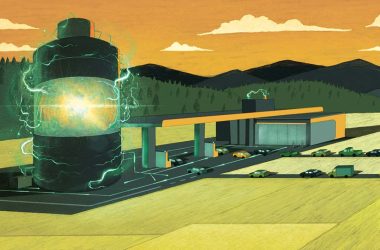Monika Schleier-Smith is hoping to create space-time from scratch in her lab
Harrison Truong/Stanford University
SPACE-TIME may not be fundamental. Instead, according to the holographic principle, it emerges from something deeper, like a 3D hologram emerges from a flat surface. The principle says that space-time, and by extension gravity, arises from quantum entanglement.
With that in mind, Monika Schleier-Smith, a physicist at Stanford University in California, is trying to create space-time from scratch in her lab. Her approach involves simulating a 2D holographic boundary around a universe. According to the holographic principle, this boundary is enough to encode all the information that describes the universe within. The principle of “holographic duality” states that space-time and the lower-dimensional boundary it emerges from are equivalent.
In essence, Schleier-Smith’s experimental setup consists of tabletop experiments using laser-cooled atoms. These atoms are isolated in a vacuum chamber and brought to very low temperatures close to absolute zero. With precise control, the atoms are positioned in a way that allows for a well-controlled quantum system.
One of the key challenges in Schleier-Smith’s work is determining if the particles are entangled. To study holographic duality, the team traps atoms between two mirrors, forming an optical resonator. This setup enables atoms to interact with each other and photons to travel between them.












